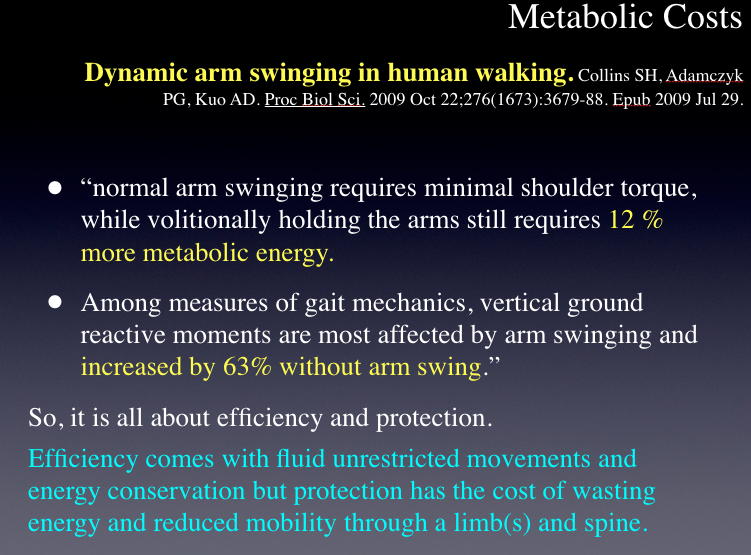Welcome to rewind Friday, Folks. This week we have hammered on arm swing. This one is from a year ago and seemed germane to this weeks posts.
Arm swing in gait and running. Why it is crucial, and why it must be symmetrical.
It becomes clear that once you get the amazing feats seen in this video out of your head, and begin to watch just the variable use of the arms that you will begin to appreciate the amazing need for arm swing and function in movement.
We have written many articles on arm swing and its vital importance in gait and running. Have you missed all these articles ? If so, go to our blog main page, type in “arm swing” in the search box and you will have a solid morning of readings at your fingertips. We are still not done writing about this most commonly forgotten and overlooked aspect of gait and running analysis, and we probably never will be done. Why is no one else focusing on it ? We think it is because they do not see or understand its critical importance.
Without the presence and use of the arms in motion things like acceleration, deceleration, directional change, balance and many other critical components of body motion are not possible.
What is perhaps equally important for you to realize, as put forth in:
Huang et al in the Eur Spine Journal, 2011 Mar 20(3) “Gait Adaptations in low back pain patients with lumbar disc herniation: trunk coordination and arm swing.”
is that as spine pain presents, the shoulder and pelvic girdle anti-phase begins to move into a more in-phase favor. Meaning that the differential between the upper torso twist and pelvic twist is reduced. As spine pain presents, the free flowing pendulum motions of the upper and lower limbs becomes reduced to dampen the torsional “wringing” on the spine. When this anti-phase is reduced then arm swing should be reduced. The central neural processing mechanisms do this to reduce spinal twisting, because with reduced twist means reduced spinal motor unit compression and thus hopefully less pain. (Yes, for you uber biomechanics geeks out there, reduced spine compression means increased shear forces which are favorite topics of many of our prior University instructors, like Dr. Stuart McGill). The consequence to this reduced spinal rotation is reduced limb swing. And according to
Collins et al Proc Biol Sci, 2009, Oct 22 “Dynamic arm swinging in human walking.”
“normal arm swinging requires minimal shoulder torque, while volitionally holding the arms still requires 12 % more metabolic energy. Among measures of gait mechanics, vertical ground reactive moments are most affected by arm swinging and increased by 63% without arm swing.”
So, it is all about efficiency and protection. Efficiency comes with fluid unrestricted movements and energy conservation but protection has the cost of wasting energy and reduced mobility through a limb(s) and spine.
In past articles we have carried these thoughts into historical functional needs of man such as carrying spears and of modern day man in carrying briefcases. Today we show a great high functioning video of another parkour practitioner. Parkour is a physical discipline and non-competitive sport which focuses on efficient movement around obstacles. Watch closely the use of the arms. The need for arm use in jumping, in balance, in acceleration etc. It becomes clear that once you get the amazing feats seen in this video out of your head, and begin to watch just the use of the arms that you will begin to appreciate the amazing need for arm swing and function in movement.
There is a reason that in our practices we treat contralateral upper and lower limbs so much. Because if you are paying attention, these in combination with the unilateral loss of spinal rotation are the things that need attention.
Yup, we are The Gait Guys….. we have been paying attention to this stuff long before the functional movement assessment programs became popular. If you just know gait, one of the single most primitive patterns other than crawling and breathing and the like, you will understand why you see altered squats, hip hinges, shoulder ROM screens etc. You have to have a deep rooted fundamental knowledge of the gait central processing and gait parameters. If you do not, every other screen that you put your athlete or patient through might have limited or false leading meaning.
Shawn and Ivo … combining 40 years of orthopedics, neurology, biomechanics and gait studies to get to the bottom of things.































